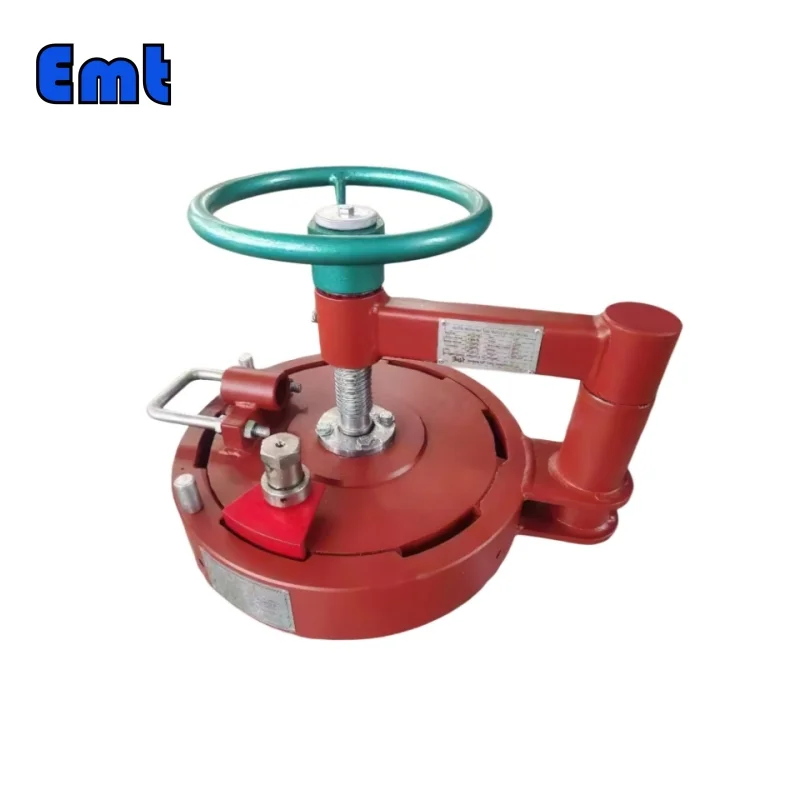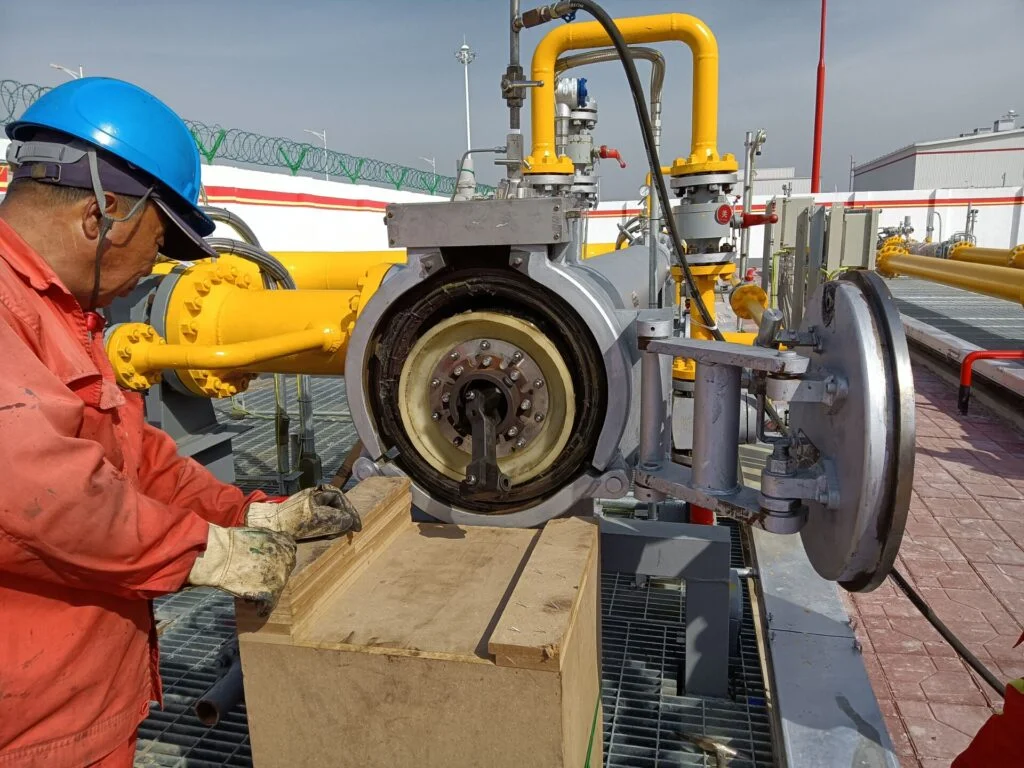Description
I. Introduction
In the realm of industrial processes, the Quick Actuating Closure has emerged as a remarkable and invaluable tool. Its introduction has brought about significant improvements in industries such as oil, gas, and petrochemicals, providing a mechanism for fast and safe access to pressure vessels – key components in many industrial systems.
So, what exactly is a Quick Actuating Closure? Imagine a secure door to a high-pressure environment, a door that can be opened and closed swiftly, minimizing downtime and enhancing operational efficiency. That’s precisely what a Quick Actuating Closure does. It’s a special type of closure system designed for pressure vessels such as pipelines and tanks. Unlike traditional bolted closures, which can be time-consuming and labor-intensive to operate, Quick Actuating Closures can be opened and secured rapidly and effortlessly, making them an essential tool in various industrial settings.
II. Understanding Quick Actuating Closure
A Quick Actuating Closure is an engineering marvel, designed to be robust, efficient, and secure. To fully appreciate its capabilities, it’s essential to understand its structure and the interplay of its components.
The Quick Actuating Closure is comprised of several key parts: the closure door, the seal, the locking mechanism, and often a pressure warning device. These components come together to form a reliable and efficient closure system for pressure vessels.
The closure door is the main component that provides access to the interior of the pressure vessel. It is designed to withstand high pressures and is typically constructed from durable materials like steel. The closure door can take on various shapes and forms, depending on the specific design and requirements of the pressure vessel.
The seal is crucial for maintaining the integrity of the pressure vessel. It sits between the closure door and the vessel body, preventing any leakage of the contained fluid or gas. The seal must be highly resilient to withstand the pressure variations and harsh conditions inside the pressure vessel.
The locking mechanism secures the closure door in place. This can be a simple handwheel or lever system or a more complex mechanical or hydraulic system. The beauty of the Quick Actuating Closure lies in the ease and speed with which this locking mechanism can be operated.
Finally, many Quick Actuating Closures incorporate a pressure warning device. This safety feature alerts operators to any residual pressure inside the vessel before the closure is opened, helping to prevent accidents.
Understanding these components and their functions is key to appreciating the ingenuity of the Quick Actuating Closure and its value in industrial processes. In the next section, we will describe how these components work together to facilitate the operation of the Quick Actuating Closure.
III. How Quick Actuating Closures Work
Understanding the operation of Quick Actuating Closures is essential for those who use them in their daily operations. These closures have been designed with simplicity and efficiency in mind, which is evident in their operation process.
Step 1: Safety Checks
Before the Quick Actuating Closure is operated, it’s vital to perform safety checks. This typically includes ensuring that the pressure in the vessel has been completely relieved. Most Quick Actuating Closures come with a built-in pressure warning device that alerts operators if any residual pressure is detected.
Step 2: Unlocking the Closure
Once the safety checks are complete, the next step is to unlock the closure. This is usually done by turning a handwheel or lever, which disengages the mechanical locking system. It’s a simple, swift action that doesn’t require any specialized tools.
Step 3: Opening the Closure
With the locking system disengaged, the closure can now be opened. Depending on the design, this may involve turning the closure door, swinging it open, or lifting it up. The ease and speed of this step differentiate Quick Actuating Closures from traditional, bolted closures.
Step 4: Accessing the Pressure Vessel
With the closure open, operators can now access the interior of the pressure vessel for inspection, maintenance, or cleaning.
Step 5: Closing and Locking the Closure
Once the necessary work inside the pressure vessel is completed, the closure can be closed and locked. This typically involves reversing the opening process: positioning the closure door back into place, securing it, and then engaging the mechanical locking system via the handwheel or lever.
Step 6: Final Safety Checks
After the closure is secured, final safety checks are performed to ensure the closure is properly sealed and safe to return to operation.
 IV. Applications of Quick Actuating Closure
IV. Applications of Quick Actuating Closure
Quick Actuating Closures are versatile devices, finding usage in a broad array of industries and applications. Their ability to secure pressure vessels quickly and safely makes them a preferred choice for many scenarios. Here, we delve into a few key sectors where these devices prove indispensable.
1. Oil and Gas Industry
In the oil and gas industry, Quick Actuating Closures are commonly used in pipelines and storage tanks. These components are essential for transporting and storing crude oil and natural gas safely. The closures allow for easy access during routine inspections, maintenance, and emergency situations, thereby enhancing operational efficiency and safety.
2. Petrochemical Industry
The petrochemical industry involves the processing of various chemicals under high pressure. Quick Actuating Closures are used in reactors, separators, and other pressure vessels involved in these processes. Their quick and secure operation is critical in maintaining the integrity of these systems and ensuring the safety of the operators.
3. Power Generation
In power generation plants, especially those using steam or gas turbines, Quick Actuating Closures are used in boilers and heat recovery steam generators. They provide quick access for inspection and maintenance, helping to minimize downtime and maintain the efficiency of the power generation process.
V. Advantages of Quick Actuating Closure
Quick Actuating Closures offer a significant set of advantages that make them an asset in any operation involving pressure vessels. They enhance safety through features such as pressure warning devices, which help prevent accidents from premature opening. Their design allows for quick and easy access to vessel interiors, reducing downtime and labor costs compared to traditional bolted closures. Made of durable materials, these closures are built to withstand harsh operating conditions, ensuring longevity. Their versatile nature makes them suitable for a wide range of industries, from oil and gas to food processing. Furthermore, their simple design reduces maintenance challenges, contributing to their overall reliability. Altogether, Quick Actuating Closures provide an efficient, safe, and cost-effective solution for pressure vessel access and sealing.
VI. Conclusion
Understanding the structure, operation, and advantages of Quick Actuating Closures is crucial for industries that rely on pressure vessels. These closures, which utilize a combination of robust materials and smart design, are a testament to the innovations in industrial engineering. Their simple yet efficient operation enhances safety and operational efficiency while reducing labor and maintenance requirements.
From oil and gas pipelines to food processing vessels and pharmaceutical autoclaves, Quick Actuating Closures have found their place across a spectrum of industries. Their ability to withstand high pressures and temperatures, coupled with their swift and secure operation, makes them a preferred choice over traditional bolted closures.
In conclusion, Quick Actuating Closures are a vital tool for any pressure vessel operation. Their numerous advantages, including improved safety, reduced downtime, labor savings, and easy maintenance, make them an indispensable asset. As industries continue to evolve and demand more efficient and safer solutions, the role of Quick Actuating Closures is set to become even more prominent.




 IV. Applications of Quick Actuating Closure
IV. Applications of Quick Actuating Closure




Reviews
There are no reviews yet.